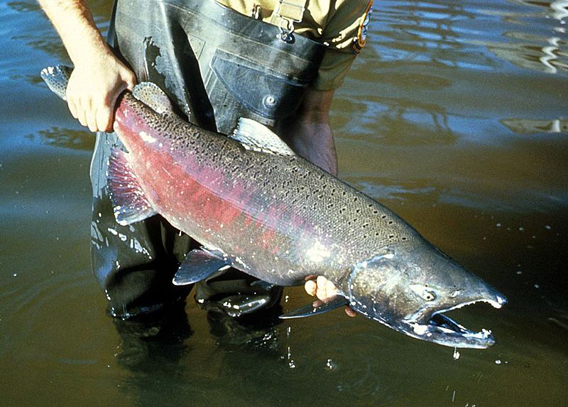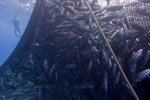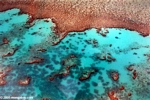
Chinook salmon. Photo by: USGS.
In March of this year the Elwha Dam, which had stood for 99 years, was demolished in the U.S. state of Washington. Five months later, Chinook salmon (Oncorhynchus tshawytscha) made their way down the river to long-blocked off habitat and entered Olympic National Park.
“As I saw the fish roll, my heart jumped!” said Phil Kennedy, Lead Fisheries Technician for Olympic, in a press release.
Park officials have been conducting weekly checks all summer, waiting for the Chinook salmon to make their return.
The Elwha Dam, which began running in 1913, was built without incorporating fish ladders, which would have let the salmon pass. In 1992 the U.S. government acquired the dam with the intent of demolishing it to allow salmon to naturally return to the Elwha River. However, the fish can only travel so far, as 13 miles down the river the salmon encounter another hydroelectric project, the Gilnes Canyon Dam. The government has purchased this dam as well and plans to demolish it, allowing the salmon to run the full river.
Prized for their meat, Chinook salmon were once plentiful in the American Northwest, but dam building, development, and widespread habitat loss has taken a massive toll on the species.
Related articles
North American freshwater fish going extinct at rate over 800 times the fossil record
(08/14/2012) Since 1898 North America has lost at least 39 species of freshwater fish, according to a new study in Bioscience, and an additional 18 subspecies. Moreover, the loss of freshwater fish on the continent seems to be increasing, as the rate jumped by 25 percent since 1989, though even this data may be low.
Featured video: restoring rivers in the Tongass Rainforest
(08/08/2012) A new video highlights recent efforts to restore rivers in the Tongass Forest, the world’s largest intact temperate rainforest. Industrial logging in vital watersheds have hurt salmon populations and other wildlife in the region, an issue the government, along with several partners, are now trying to rectify.
World failing to meet promises on the oceans

(06/14/2012) Despite a slew of past pledges and agreements, the world’s governments have made little to no progress on improving management and conservation in the oceans, according to a new paper in Science. The paper is released just as the world leaders are descending on Rio de Janeiro for Rio+20, or the UN Summit on Sustainable Development, where one of the most watched issues is expected to be ocean policy, in part because the summit is expected to make little headway on other global environmental issues such as climate change and deforestation. But the new Science paper warns that past pledges on marine conservation have moved too slowly or stagnated entirely.
Australia sets aside 40 percent of its waters for protection

(06/14/2012) In an announcement to coincide with the beginnings of the UN’s Rio+20 Summit on Sustainable Development, Australia has announced ambitious plans to protect 3.1 million square kilometers (1.19 million square miles) of its ocean, including the Coral Sea. If enacted, the proposition will increase Australia’s marine protected areas from 27 to 60, covering about 40 percent of Australia’s waters.
Regulations help fish, and fishermen, recover in the U.S.
(05/30/2012) Marine fish populations in the U.S. are generally recovering, according to a new report by the National Oceanic and Atmospheric Administration (NOAA). Last year six fish populations reached healthy levels in the U.S., boosting the total number of fish populations that have recovered to 27 since 2000. The success is due to the implementation of science-based annual catch limits which regulate how many fish are caught every year.
Nearly 2,000 fish species traded in U.S. tropical aquarium market
(05/24/2012) The U.S. tropical aquarium market poses problems and opportunities for conservation, according to a landmark study published in the open-access journal PLoS ONE. The study reviewed import records in the U.S. for one year (2004-2005) and found that over 11 million wild tropical fish from 1,802 species were imported from 40 different countries. While the number of fish species targeted surprised researchers, the total amount of fish imported was actually less than expected.